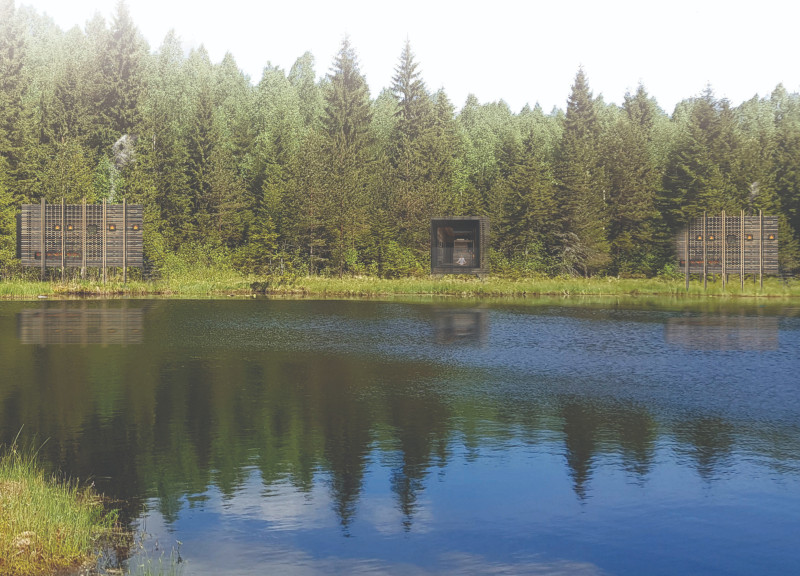5 key facts about this project
At its core, "Cocoon" serves as a retreat—an architectural haven designed for reflection, interaction, and relaxation. It conveys the idea of enclosure and protection while simultaneously allowing the natural elements to permeate the space. This simultaneous connection with the external environment is a primary goal of the design, ensuring occupants experience the sights, sounds, and smells of the forest while remaining sheltered.
The architectural design features a robust wooden framework, emphasizing sustainability and a harmonious relationship with the surrounding landscape. Use of timber resonates with the forest and reinforces a narrative of environmental stewardship. The façade comprises vertical wooden panels that not only offer visual transparency but also facilitate airflow and acoustics, allowing the forest's natural ambiance to infiltrate the interior. This thoughtful approach to materiality highlights a key element of the design ethos—creating a dialogue between the built environment and nature.
Inside, the spatial organization of "Cocoon" emphasizes flexibility and multiplicity. Meditation areas are complemented by skylights, enhancing the quality of light within the space while establishing a direct connection to the sky. This design choice encourages occupants to reflect and contemplate, fostering moments of quiet introspection. Multiple functional areas are designed for social interaction and communal activities, offering a range of experiences according to the needs of users. The dynamic nature of these spaces allows for personal engagement and a gathered sense of community.
Significant design details include the integration of gas lamps that contribute to a warm and inviting atmosphere, reminiscent of a campfire within the forest's embrace. The use of pivot wooden panels serves both practical and aesthetic purposes, allowing the adjustment of space configuration while maintaining an organic flow within the environment. Such elements highlight the project’s commitment to creating a versatile and adaptive space that encourages occupants to connect with their surroundings and with each other.
The unique design approaches utilized in "Cocoon" reflect a deep understanding of how architecture can enhance human experience. With a deliberate focus on sensory engagement, the project challenges traditional boundaries between inside and outside, making nature an integral part of the architectural experience. By prioritizing materials that reflect ecological sensibilities and promoting flexibility in spatial design, "Cocoon" offers an innovative perspective on how structures can foster a deeper relationship with the environment.
This project invites the viewer to explore its architectural plans, sections, designs, and ideas, encouraging a closer examination of how these elements contribute to the overall vision. The thoughtful interplay of form and nature within "Cocoon" illustrates the potential of architecture not only to provide shelter but also to enrich the human experience by harnessing the essence of the natural world. For those interested in understanding the intricacies of this project further, it is worth delving into the detailed presentation to uncover the architectural merits and the ideas that define "Cocoon."


























